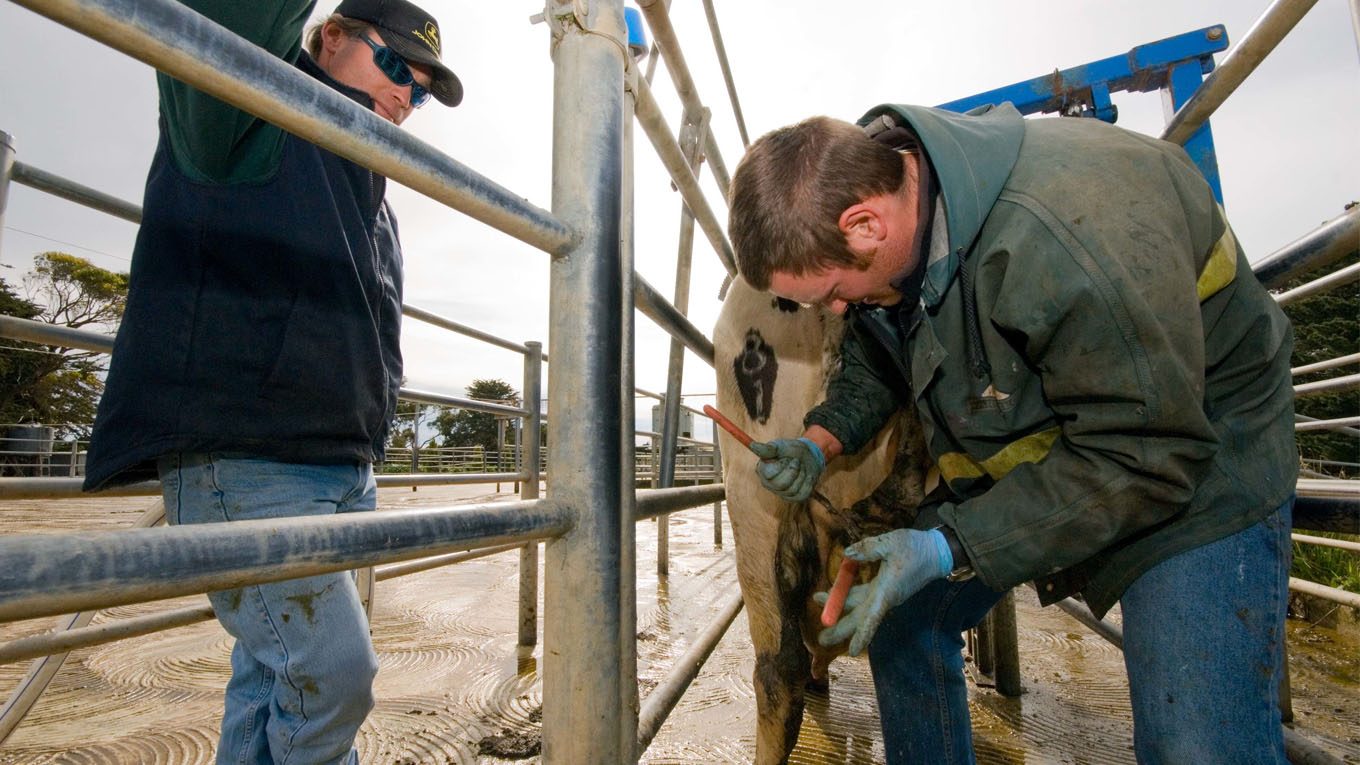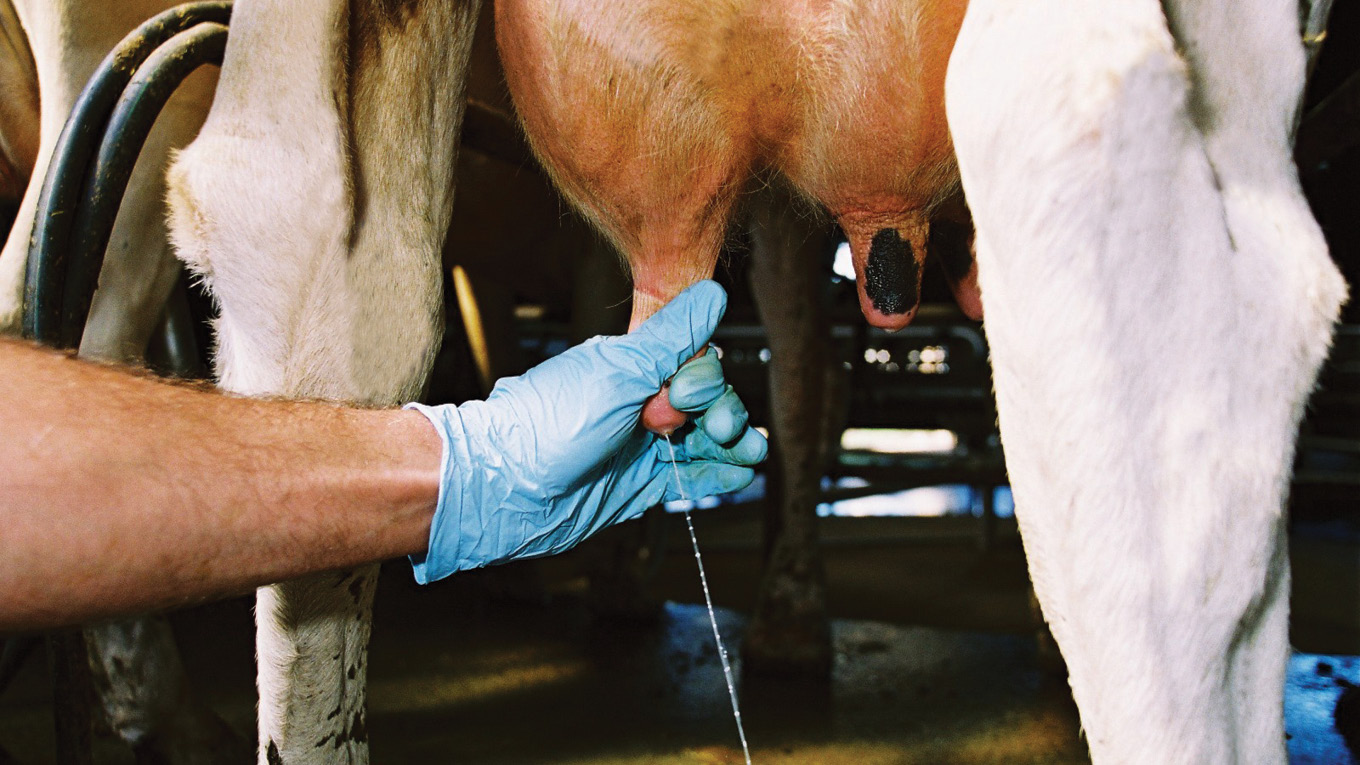Drying Off
After each lactation, dairy cows require a dry period which is sufficiently long to allow the udder tissue to involute (shrink down), repair and rejuvenate. Many of the cells that produce milk are removed and replaced again before the next calving. A minimum of six weeks – preferably eight weeks – is recommended between drying off and calving.
The dry period is a critical period to prevent new environmental infections. For some farms, this will be the greatest risk for new mastitis infections that then present during lactation. Previous research has suggested approximately 50% of clinical mastitis cases occurring in the first 76 to 100 days of lactation from environmental pathogens originated in the dry period (Bradley and Green, 2000).
Dry cow treatment
Dry cow treatment is used to:
- Treat existing sub-clinical infections that have persisted during lactation
- Reduce the number of new infections which may occur during the dry period
Antibiotic dry cow treatment is administered into the udder immediately after the last milking of a lactation. It is designed to remain in the udder in concentrations high enough to kill mastitis bacteria for a period which depends on the product used, which is usually between 20 and 70 days. The prolonged time of exposure to antibiotic and the formulation enhance penetration and give an increased chance of curing infections embedded deep in the udder.
Dry cow treatment also protects udders from new infections in the dry period. Research conducted in New Zealand has shown this occurs directly through the antibiotic presence soon after drying off and indirectly by promoting the formation of the natural keratin plug which seals the teat canal.
Dry cow treatment products only work against the most common mastitis causing bacteria. They do not work against some environmental bacteria which can be introduced into the udder if the teat ends are not correctly disinfected prior to administration.
Selective (part-herd) antibiotic dry cow therapy
The combination of global trends of reducing whole-herd antibiotic dry cow therapy and an increasing sensitivity towards antibiotics reaching farm bulk tanks has meant there are now more people starting to implement part-herd antibiotic dry cow therapy. This change in management is not without its risks and should be done in close consultation with a Countdown-trained advisor.
When hygiene and other management at drying off is not managed well, the process of drying off can lead to an increase in mastitis in both the dry period and the next lactation.
Farms that are well-placed to implement part-herd (selective) dry cow antibiotic already have:
- A low bulk milk cell count (BMCC) year-round
- Herd testing
- Good/complete clinical mastitis records
- Low calving time mastitis (less than 5% of cows with clinical mastitis in the first 14 days after calving)
- Good dry cow and calving time management
- No history of cows getting mastitis after drying off or in the dry period
- A good working relationship with mastitis adviser and proactive with staff training on dry cow treatment
- No history of Streptococcus agalactiae (Strep ag) mastitis
Most farms moving to part-herd antibiotic therapy use whole-herd administration of internal teat sealants. However, this decision should be made in consultation with a Countdown-trained advisor.
Countdown’s dry cow resources can assist farmers to make informed choices about their dry cow strategy. Countdown technotes and fact sheets are an excellent resource to guide review and improvement in this important area of management.
Watch the Countdown Dry cow treatment video.
Dry Cow Consult
The Dry Cow Consult tool helps dairy farmers to consider some important things that will ensure the drying off period is as successful as possible. It can be used either before a meeting with a Countdown advisor or to guide discussion with an advisor and veterinarian.
Conducting annual or bi-annual dry cow consults which examine BMCC history, clinical case records (including calving time mastitis) and reviewing practices is critical to optimise results from the dry period and minimise any adverse events.
Dry cow discussion groups
A tool kit of resources is available for advisors to run dry cow discussion groups. This involves facilitated discussion on dry cow management and practical demonstrations of hygienic dry cow techniques.
There are also two webinars available:


